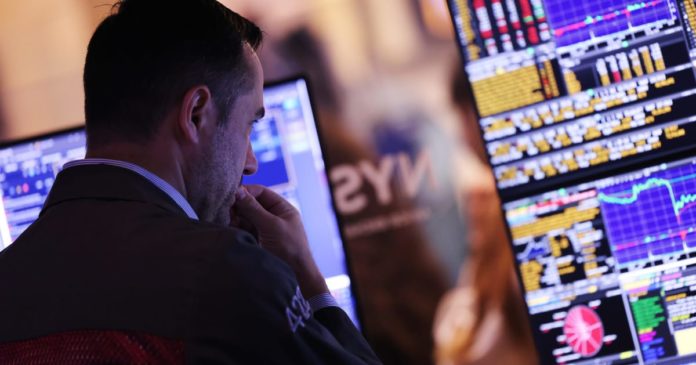“They normally say, well, this is not an issue for us … then three to six months later, we all find out that we cannot escape,” ING’s Brzeski said.
A U.S. recession would make the European Central Bank’s already “too optimistic” forecast for growth “obsolete,” he said.
But, he said, if ECB chief Christine Lagarde were asked about the consequences of U.S. rates’ “hard landing” she would still reply by saying “we have a strong domestic economy, we are independent, and we stick to our forecasts.”
And, he added, “of course, this has never been true.”
EU governments also have limited tools to react to financial troubles, being forced to re-invent European self-defense equipment whenever each crisis strikes.
So your doomsday recap …
The U.S. enters into a recession, Europe follows, staying in a recession at least until mid-2025, and EU governments will start to … just discuss what to do.
Brzeski predicts new fuss about national spending rules, and debates on how to tackle the economic troubles.
Then there’s the mounting debt piles in some of Europe’s biggest countries — France and Italy first and foremost — which remain unlit powder-kegs, but which could go off if a 2008-style crisis were to return, raising the prospects of bailouts of entire economies.
That’s the point where you can wake up in a horror movie …
Oh, and one other thing
Another potential source of economic carnage is a little bit more arcane.
Japan’s central bank had made borrowing in the country very cheap. But now things are reversing.
A truly staggering amount of money — as much as $1 trillion worth of yen, according to investment research firm TS Lombard — was borrowed by investors. Some of that money went into European stocks, and now that debt needs paying off.
There are indications that more rate increases from the Japanese central bank are coming, which means that this kind of disruption to financial markets is likely to continue, according to S&P Global Intelligence’s Wattret.
“We’re moving into a period that we haven’t been in for decades,” he said. “We should still expect conditions to be more volatile going forward. It’s going to be a bumpy ride.”
In a worst-case scenario, a sell-off in European stocks to pay back debt in yen could drive down asset prices in Europe, and that in turn would impact investment in the real economy.
The ongoing slowdown in China — another big buyer of European goods — then risks turning that cold into a full-blown flu.
But cheer up …
… it might never happen.


